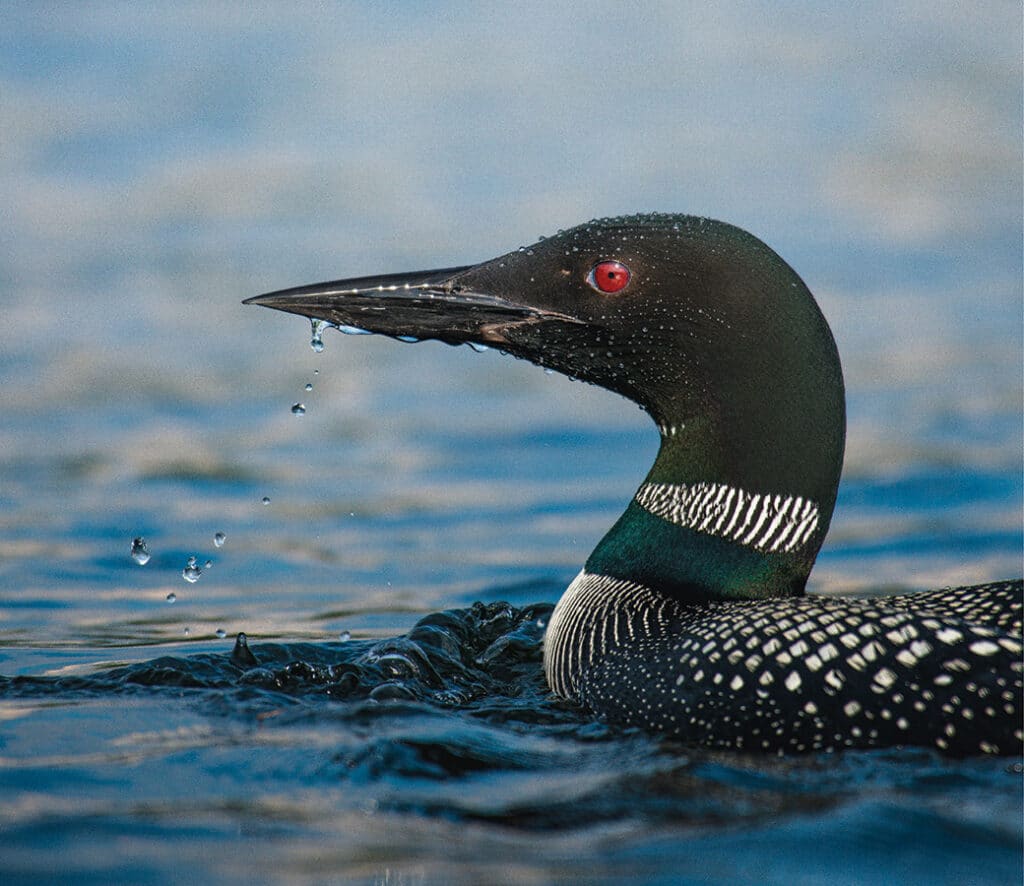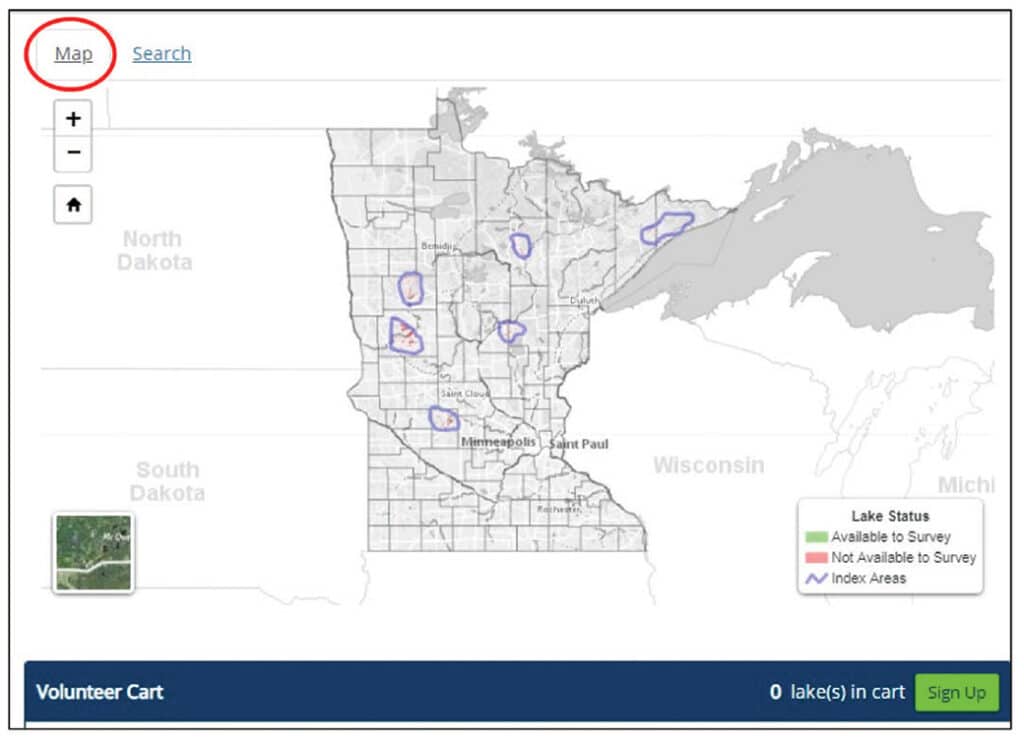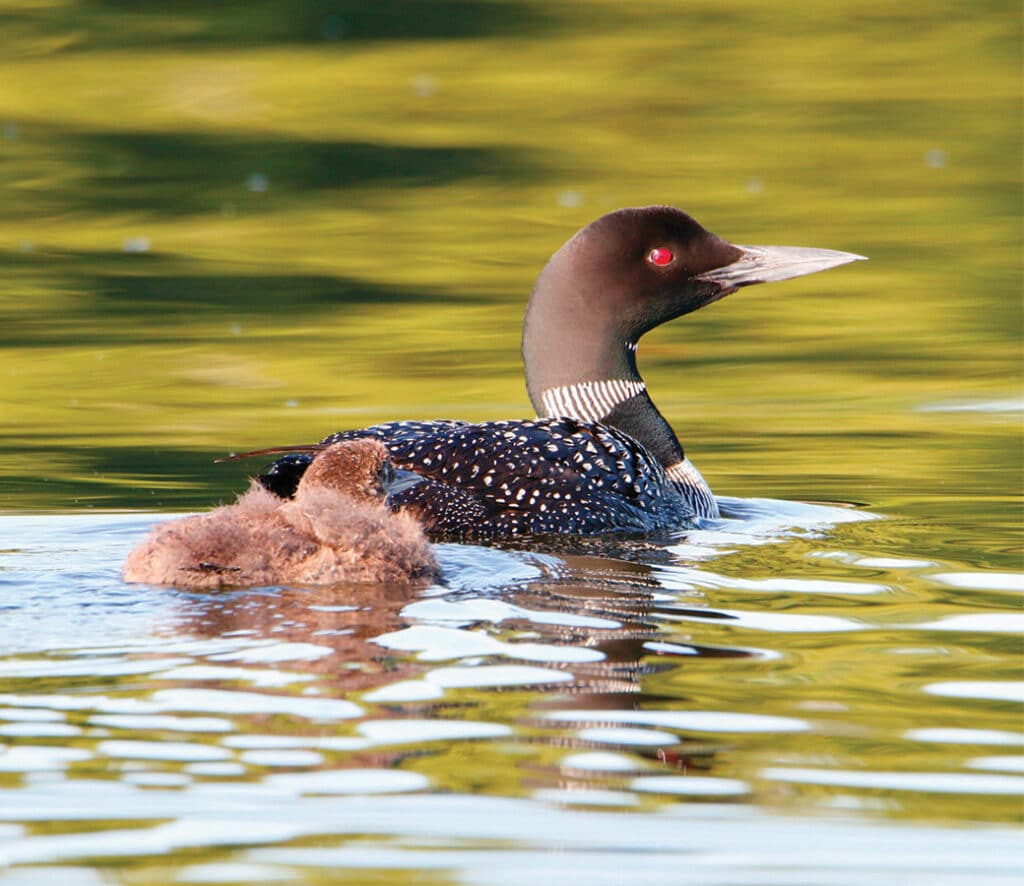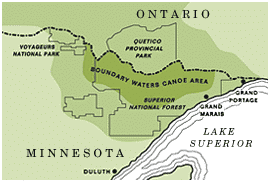
Volunteers are needed to count loons this summer. The Minnesota Department of Natural Resources (DNR) is seeking people to observe and count the state bird between July 4-14 for their monitoring project. The information gathered will help protect and support the continued health of the birds. Current populations hover around 12,000, more than any other state besides Alaska.
Largest population in the Lower 48
For over thirty years, the DNR has been monitoring the common loon. The observation area spans over 600 lakes and six regions, including northern Minnesota. The information collected provides insight into the health and reproductive success of the birds. In addition, ongoing research helps identify potential threats to loons’ environment.
“The Minnesota Loon Monitoring Program is a success due to hundreds of volunteers who conduct surveys annually,” DNR Nongame Wildlife Specialist Gaea Crozier said. “The data collected allows us to track changes in the loon population over time and identify potential management needs and opportunities on Minnesota lakes.”
Minnesota’s state bird stands out amongst the myriad of lakes. While their range includes central Minnesota all the way to northern Minnesota, their iconic calls are a highlight of summer trips in the Boundary Waters Canoe Area Wilderness. They are indicators of water quality because they need clear, clean water to catch food.
More at home in the water than on land, the loon uses its streamlined body to move swiftly in search of prey. Its striking black-and-white pattern, black head, and vivid red eyes make it easy to recognize. While the male is slightly larger than the female, both look the same. After migrating in the fall, loons molt into mostly gray plumage with white bellies.
They also prefer undisturbed shorelines where they can feed and raise their young. Loons usually build their nests along the edges of islands or lakes, using grass and reeds. They lay one or two eggs in May or June. After about 30 days, blackish-brown chicks hatch. They will stay close to their parents, learning how to feed and survive. In September, young loons will take flight and follow their parents on the migration to southern states.

How to participate
Organizers ask observers to monitor between July 4 and 14, primarily from 5 a.m. to noon. The counties under observation include Aitkin, Becker, Cook, Crow Wing, Itasca, Kandiyohi, Lake, and Otter Tail counties. Surveyors can choose which lake to count loons on and will conduct their counts along lake shores or from boats using binoculars or a spotting scope. Larger lakes usually host more loons, as the birds need a long “runway” on the water to take off.
Participation is open to everyone. Observers can use an online system to manage their lake assignment, view maps, and access information on their lake. Those interested can sign up as a survey volunteer through the DNR’s loon monitoring program and click on “Volunteer Map”. Once there, select an available lake, add it to a cart, and become a loon surveyor.
If you have specific questions, contact the corresponding county coordinator listed below.
- Cook, Lake, or Itasca counties: Bry Persing, 218-735-3962, bryonna.persing@state.mn.us.
- Aitkin or Crow Wing County: Karen McLennan, karen.mclennan@state.mn.us, 218-203-4352
- Becker or Otter Tail County: Kristie Brezina, kristie.brezina@state.mn.us, 218-671-7977
- Kandiyohi County: Mike Worland, michael.worland@state.mn.us, 507-649-9081
The Minnesota Loon Monitoring Program is part of the DNR’s broader Nongame Wildlife Program. Support comes from donations to the nongame wildlife check-off on Minnesota’s tax forms.

More info:
- Volunteers needed for DNR loon survey – Minnesota Department of Natural Resources
- Minnesota Loon Monitoring Program – Minnesota Department of Natural Resources

